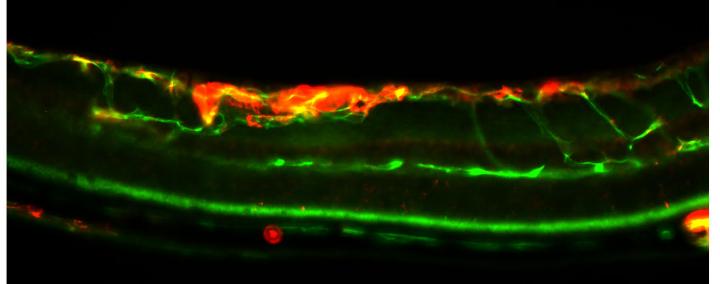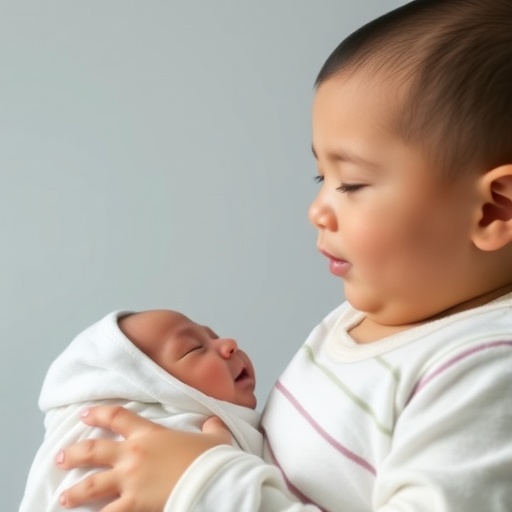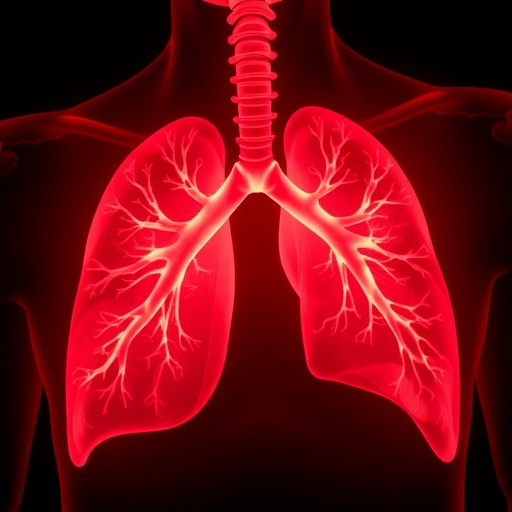The research, published in the journal PLOS Genetics, combined a study of the genes involved in retinopathy, as a model of angiogenesis, with analysis of transcriptomic gene expression profiles from public breast cancer databases.

Credit: Ricardo Giordano
Researchers have identified a genetic signature with prognostic value for certain kinds of breast cancer. The discovery also contributes to a better understanding of the molecular mechanisms of pathological angiogenesis, the aberrant proliferation of blood vessels that occurs during cancer and other diseases.
The research, published in the journal PLOS Genetics, combined a study of the genes involved in retinopathy, as a model of angiogenesis, with analysis of transcriptomic gene expression profiles from public breast cancer databases.
Conducted by researchers at the University of São Paulo’s Chemistry Institute (IQ-USP), in collaboration with the Ontario Institute for Cancer Research (OICR) in Toronto, Canada, the study was supported São Paulo Research Foundation – FAPESP.
“We identified a set of genes whose expression in breast cancer correlates with the degree of pathological angiogenesis in the tumor, so that it serves as a genetic signature of angiogenesis that is prognostic and more robust than the signatures identified previously, given the correlation found between angiogenesis and tumors generally,” said Ricardo Giordano, a professor at IQ-USP, head of its Vascular Biology Laboratory and a co-author of the study.
In the study the Brazilian researchers identified 153 altered genes in both healthy and diseased retinas in mice. From this list they identified 149 equivalent human genes. The result served as the basis for a genetic signature study in partnership with the Canadian team, using a database with information on breast cancer patients. The conclusion was that 11 key genes involved in pathological angiogenesis performed best in terms of prognostic value.
Pathological angiogenesis is common to breast cancer and retinopathy. “The fact that these two diseases share this process and that angiogenesis is fundamental to the development of cancer in general led us to try to build a bridge between retinopathy and breast cancer,” said João Carlos Setubal, head of USP’s Bioinformatics Laboratory and also a co-author of the article.
According to the researchers, the study focused on breast cancer because of the large amount of data available on the disease. “We had to have access to a vast quantity of public data, given the considerable variation between one patient and another. This is the case for breast cancer. Genetic profiles are available for some 2,000 patients,” Setubal said.
Bioinformatics was crucial to finding the genetic signature, he added. The data generated in the laboratory was submitted to sophisticated computational processing in partnership with researchers at OICR in Canada. Another co-author of the study, Rodrigo Guarischi de Sousa, then a PhD student, wrote the program that tested the 149 human genes as possible components of the signature for breast cancer. In this part of the study he was supported by a scholarship from FAPESP for a research internship abroad supervised by Paul C. Boutros at OICR.
Boutros is currently a researcher in the Human Genetics Department at the University of California, Los Angeles (UCLA). Guarischi de Sousa now works at DASA, Brazil’s largest medical diagnostics company.
The researchers plan to find applications for this signature, especially in treatment for breast cancer. “Our next goal is to continue studying angiogenesis in cancer,” Giordano said. “We’re interested in identifying genes on this list that can be targets for the development of new drugs or new applications of existing drugs.”
From retinopathy to breast cancer
The discovery of the prognostic gene signature for breast cancer is the result of a long study supported by a research scholarship from the National Council for Scientific and Technological Development (CNPq) starting in 2010, when Giordano began studying the transcriptome (RNA expression) and proteome (protein expression) of pathological retinal angiogenesis.
“As a result of this study, our lab implemented a mouse model to research retinopathy. The murine model is important as it’s difficult to study blood vessel formation outside living tissue. This model enables us to induce retinopathy by modulating oxygen levels and study angiogenesis in the lab,” Giordano said.
The researchers took blood samples from mice to investigate the differences between physiological angiogenesis, which occurs in healthy individuals (in wound healing, ovulation and placental growth, for example) and pathological angiogenesis, which is part of disease (e.g. cancer or arthritis).
“We observed which genes were expressed by endothelial cells [the inner lining of blood vessels] in both kinds of angiogenesis, always looking for the genes that were more expressed in one kind than the other,” Giordano said.
A key element of the experiment was oxygen variation in the chambers containing newborn mouse pups. In chambers with oxygen at 75%, the mice became retinopathic, whereas in ambient air (oxygen at 20%) the retina developed normally.
The relationship between oxygen and cells has been in the news lately. William Kaelin, Peter Ratcliffe and Gregg Semenza won the 2019 Nobel Prize in Physiology or Medicine for discovering how cells sense and adapt to changing oxygen availability.
Gene expression-based prognostic signature
It is important to stress that clinical applications of the genetic signature for angiogenesis may differ from applications deriving from the marker gene BRCA1. The BRCA1 gene mutation became world-famous in 2013 when US actor Angelina Jolie underwent a preventive double mastectomy after genetic testing showed that she carried the mutation and hence ran an 87% risk of developing breast cancer.
“BRCA1 is a genomic gene,” Setubal said. “A woman with mutations in this gene faces a higher risk of developing breast cancer but won’t necessarily do so. The presence of mutations in this gene serves to help predict the appearance of the disease. The signature we describe in our study proved promising to predict the development of breast cancer after it actually appears.”
###
About São Paulo Research Foundation (FAPESP)
The São Paulo Research Foundation (FAPESP) is a public institution with the mission of supporting scientific research in all fields of knowledge by awarding scholarships, fellowships and grants to investigators linked with higher education and research institutions in the State of São Paulo, Brazil. FAPESP is aware that the very best research can only be done by working with the best researchers internationally. Therefore, it has established partnerships with funding agencies, higher education, private companies, and research organizations in other countries known for the quality of their research and has been encouraging scientists funded by its grants to further develop their international collaboration. You can learn more about FAPESP at http://www.
Media Contact
Joao Carlos Silva
[email protected]
55-113-838-4381
Original Source
http://agencia.
Related Journal Article
http://dx.




